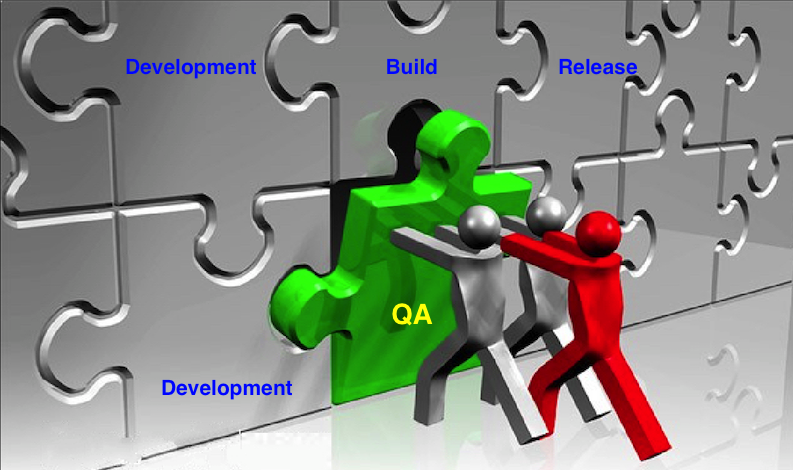QA Process – How should it integrate with development, release process

In today’s fast paced Information Technology world where everybody wants the work done yesterday, testing of products and its modules as being developed is seeing increasing pressure and complexity. Methods employed by the QA teams that work on the same program tests across the globe are changing rapidly.
Traditionally, the QA methodology was regarded as a separate process, out of step with the developer. Today, it is a collaborative process between the developers, QA testing team, and the Customer. Today’s Software teams involve a number of people: developers, testers, designers, product managers, and executive stake holders. All of them collaboratively playing a role in the quality of the final application.
The schedule of any software project as we know, is driven by business needs. For the software team to commit to schedules or deadlines, it is important for the team to come together for providing a realistic estimate. Although, project requirements may not always be well defined at the initial stages or the detailed methodology be outlined, or dependencies still unidentified, yet, it is important to establish a high-level estimate so that the project can be planned accordingly. The QA process needs to be well integrated into the software project delivery estimate to be able to deliver not just the product on time but with quality!
An effective testing strategy includes automated, manual, and exploratory tests to efficiently reduce risk and tighten release cycles. So how can the QA process integrate with development and keep the release process on track?
Here are some pointers that can help strategize the delivery of a quality product with fewer bugs:
Feedback: The QA process needs to be initiated with the test engineers being included in the development process and providing feedback on scope, architecture and understanding its sustainable development.
Response Time: Regular interaction between developers and QA is necessary for testing in the Sprint. Routine brainstorming on how to resolve issues is helpful. The testers need to be responsible for the product’s automated test framework and should respond quickly to the needs of the development team.
Best Practices: Although, the QA team can have a set of practices in place, a bit of creativity to handle “out-of- the-box” issues needs quick thinking. More often than not, test cases may not be relevant when building a new feature amidst tight schedule, where the much required critical feedback to the team is sacrificed due to schedule pressures. Building a QA process that works with best practices that involves exploratory testing is a must for most software development teams.
Prioritizing: Software test engineers should be able to effectively triage the issues. That will help prioritize the severity and risk. The result is that the developmental team can focus on high priority fixes.
Integration & perspective: Get the QA team members to be trained with basic software skills so that their perspective into feature development is enhanced. This should be applied vice-versa to software developers too.
Collaboration between software developers and QA analysts can help adequately test elements of a feature before it is completed. It is important that QA be an integral part of the software development team, be involved in design meetings, to give them visibility as an advantage to understand about the expectations of a User Story, just as the developers do. This helps QA to start creating high-level test cases very early in the process that will further evolve over time.
The critical aspect to consider here is “direct” conversations between the development team and the QA team, which should be part and parcel of the QA process and the development team on a daily basis. The QA team literally needs to be in the face of the development process to be able to respond rapidly with enhanced test cases to quickly deliver as the development team builds. Waiting till the very end to involve QA, will cost both the development team and the Customer, time and money that an organization can ill-afford in today’s highly charged competitive world.